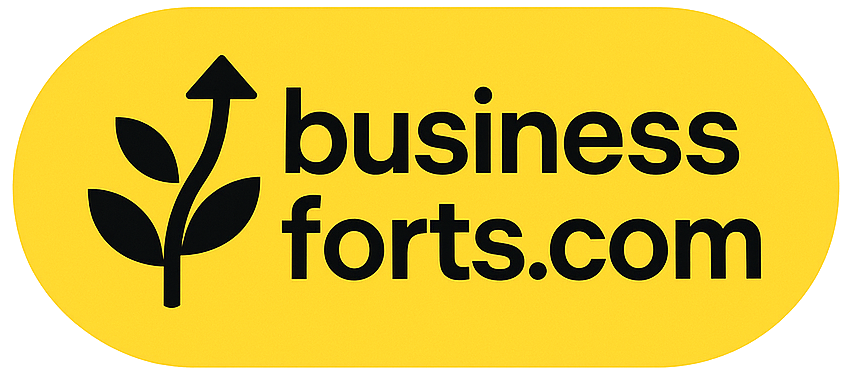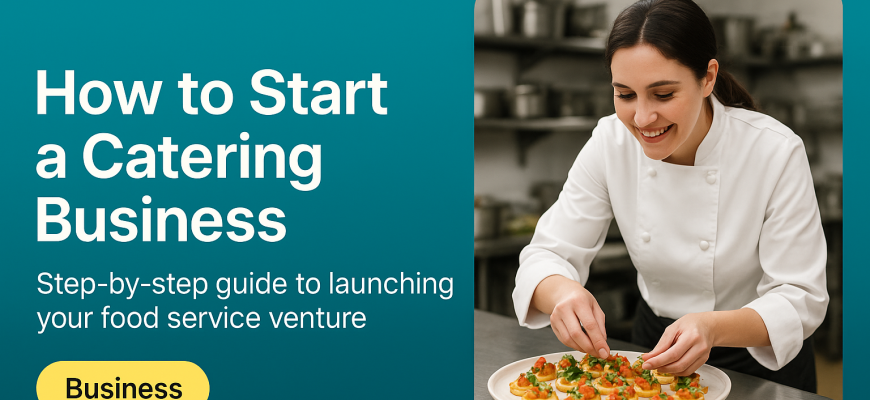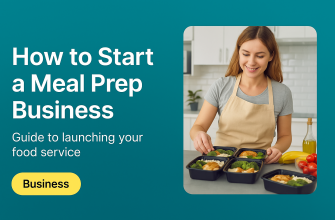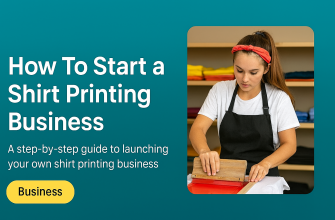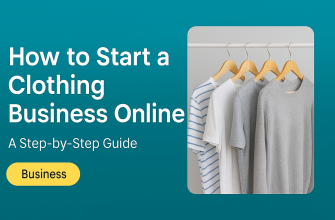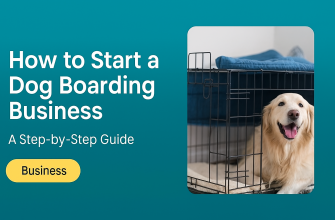Starting your own catering business is an exciting way to turn your love of cooking into a rewarding career. If you’ve been dreaming of sharing your delicious creations with paying customers, know that you’re not alone – women across the country are building food businesses (nearly 40% of U.S. restaurant businesses are majority women-owned). It’s absolutely possible to start small (even from your home kitchen) and grow at your own pace. Let’s walk through how you can get your catering venture off the ground, with confidence and a clear plan.
Step 1: Identify Your Niche and Specialty
Every great catering business starts with a clear niche. Ask yourself: what kind of food and events light you up the most? Perhaps you make amazing vegan desserts, or you want to cater cozy backyard weddings. Pin down the focus that reflects your unique flair and passion. Choosing a specialty will actually make it easier to stand out in the market. Instead of trying to cook “anything for anyone,” be the go-to expert for a particular cuisine or style. After all, if a client wants a fully gluten-free, vegan menu, they’re more likely to hire a caterer known for vegan dishes than a general “jack of all trades” caterer. So whether it’s homestyle Southern comfort food, elegant French pastries, or health-conscious meal prep, embrace what you do best. Your niche is your strength – it’s what will make customers remember you and recommend you to others.
Step 2: Craft Your Menu and Services
Next, start designing a simple menu that showcases your best dishes. As a beginner, keep the menu manageable – a selection of your top 5–10 signature dishes or packages is a great start. This allows you to perfect each recipe and work efficiently, rather than reinventing the wheel for every client. One smart strategy is to offer a set menu or a few fixed packages that clients can choose from, rather than cooking completely custom orders every time. For example, you might have an “Italian Family-Style Dinner” package or a “Party Appetizer Sampler”. You can even create tiered options – say, a basic, deluxe, and premium menu tier – each with a different per-person price point. This way, you give customers flexibility to fit their budget while still controlling your workload.
When crafting your menu, think about foods that travel well (if you’ll cook at home and deliver) and dishes that play to your strengths. Consider any dietary niches in your market too – offering a few vegetarian, vegan, or gluten-free items can attract more clients. Most importantly, choose dishes you’re confident making in larger batches. You want to be proud of every item that leaves your kitchen. As you gain experience, you can always expand the menu, but starting with a focused selection will keep things simple and stress-free for you as a new entrepreneur.
Step 3: Take Care of Licensing and Regulations
Turning your cooking into a business means handling a bit of paperwork to stay legal and safe. It might not be the most glamorous part of catering, but don’t worry – you can absolutely tackle it step by step. The requirements will vary depending on your state and city, but here are some common U.S. licensing and regulation needs for small-scale caterers:
-
Business License – You’ll likely need a basic business license to operate legally in your city or county. This is usually a simple registration to let the local authorities know you’re running a business.
-
Food Service Permit – If you plan to cook from home, check if your state allows it. Many states require that your kitchen be inspected and permitted by the health department if you cater from home. Some areas have “cottage food laws” that allow limited types of home-produced foods, while others might require you to use a licensed commercial kitchen. Be sure to learn the rules for your location.
-
Food Handler Certification – In most places, at least one person (you or a helper) will need a food handler’s certificate or food safety training. This usually involves a short course on safe food preparation and handling – important for keeping your customers safe and your reputation great.
-
Liability Insurance – It’s wise to get a simple liability insurance policy for your business. If, by rare chance, someone were to get sick or injured from your food, liability coverage protects you and your venture. This gives peace of mind as you start serving the public.
-
Special Permits – Consider if you need any extra permits. For example, will you serve alcohol (like champagne toasts or cocktails at events)? If yes, you’ll need to obtain a liquor license to cater alcohol legally. Also, if you’ll operate under a business name (like “Delicious Divas Catering”), you may need to register a “Doing Business As (DBA)” name with your state.
Spend a bit of time researching your local requirements – a great first step is to contact your city or county’s small business office or the SBA (Small Business Administration) for guidance. They can often tell you exactly what permits you need. Yes, it’s paperwork, but you’ve got this! Tackle the legal steps one by one, and you’ll set your business up on a solid foundation. Getting these ducks in a row early means you won’t have to worry – you can cater with confidence knowing you’re fully compliant with the rules.
Step 4: Set Up Your Kitchen with Minimal Investment
One of the best things about starting small is that you don’t need a state-of-the-art kitchen or expensive gadgets on day one. Use what you have and acquire only the essentials. Before you rush out to buy new equipment or fancy serving platters, take stock of your current tools. Can that large pot or extra mixer you already own do the job? Instead of purchasing everything brand new, see what you can find second-hand or even borrow from friends and family. Keeping your expenses low at the beginning will help you turn a profit sooner, so focus on the basics and get resourceful.
Here are some essential items and equipment to have for a home-based catering operation (many of which you might already have on hand):
-
Quality Cookware: A couple of large pots, pans, and baking sheets for cooking in volume. Also, a good set of knives and sturdy cutting boards for safe, efficient prep work.
-
Food Prep Tools: Mixing bowls, measuring cups/spoons, spatulas, and an electric mixer or food processor if your menu requires it. These help you handle bigger recipes smoothly.
-
Serving Gear: Think about how you will present and transport food. Serving trays or platters, large bowls, and serving utensils (tongs, ladles, cake server, etc.) will be useful for setting up buffets or family-style spreads. You don’t need silver platters – simple, presentable dishes are fine, and you can rent nicer serving ware for special events if needed.
-
Transport & Storage: To keep hot foods hot and cold foods cold during delivery, invest in insulated food carriers or coolers. Also stock up on food storage containers (with lids) for preparing ingredients ahead and safely storing leftovers.
-
Basic Safety and Cleaning: Make sure you have a food thermometer (to check that dishes reach safe temperatures), plenty of kitchen towels, sanitizer or soap for cleaning surfaces, and maybe some disposable gloves for hygienic handling.
Remember, your home kitchen can be your headquarters when you start out. Many successful catering businesses began with just a home stove and a dream! As long as you’re following the health guidelines, a small kitchen is perfectly fine for small-scale gigs. You can always upgrade or rent larger kitchen space later as your business grows. For now, start with the tools you truly need to cook and deliver your food safely. By being frugal and creative with equipment, you’re keeping overhead low and setting yourself up for profitability from the get-go.
Step 5: Price Your Services Smartly
Pricing can feel tricky when you’re new – you might be asking, “How much should I charge?” The goal is to set a price that both appeals to customers and fairly compensates you for your work. Start by calculating your costs for each job. This includes ingredients for the menu, any packaging or disposable serving items, and even things like fuel if you’ll be driving to deliver or serve on-site. Also factor in your time (and any helpers’ time) as part of the cost – your labor has value! Once you add all those up, make sure the price you charge the client covers those expenses with some profit on top. You deserve to earn something for your hard work, not just break even.
A common approach in catering is to charge per person for events. For example, you might decide a certain menu is worth $30 per guest; if a client needs service for 20 people, that’s 20 × $30. Alternatively, for very small orders (like a dozen boxed lunches) you could charge a flat package rate. Decide on a pricing model that fits your style – per person is easy for events, but you could also price per platter or per hour for your time, depending on the situation. As you set prices, do a little research on what other small caterers or restaurants in your area charge for similar offerings. This will give you a ballpark range and ensure you’re not way under or over the typical market price.
Importantly, don’t undervalue yourself. It’s tempting to set super low prices at first because you’re new, but remember that you’re providing a professional service. Charging too low can not only burn you out (if you’re barely covering costs) but can also signal lower quality to clients. Instead, price reasonably and confidently. You can always offer a limited-time “launch” discount or a small extra (like a free dessert) for first-time clients to sweeten the deal. As you gain experience and testimonials, you’ll feel more secure in your pricing. Every time you successfully complete an event, your confidence in charging what you’re worth will grow.
Step 6: Market and Promote Your Business
Now it’s time to get the word out and find those first customers! Marketing might sound intimidating, but you can start small here as well, using mostly free or low-cost methods. The key is to let your community know that you’re open for business. Here are some simple marketing tips to begin with:
-
Social Media Presence: Set up an account on one or two platforms where your potential clients are likely to be (many caterers use Facebook or Instagram). Regularly share mouth-watering photos of your dishes, behind-the-scenes peeks of you cooking, and updates about your services. Good food photography is especially important online – eye-catching, high-quality photos will attract people’s attention. You don’t need a fancy camera; a smartphone and natural lighting by a window can do wonders. Engage with your followers by responding to comments and even asking fun questions (for example, “What’s your favorite comfort food?”). This builds a connection with your audience.
-
Create a Simple Website: A website is your online home base. It doesn’t have to be elaborate. A single-page site with your business name, menu or services, contact information, and a few nice photos can be enough to start. You can use easy website builders (like Wix, Squarespace, or even a well-designed Facebook Business page) – no coding required. Having a website makes you look professional and allows people to find you online when they search for catering in your area. Be sure to include any testimonials or quotes from happy customers as you get them, and share a bit of your story on the site – why you love catering and what makes your food special.
-
Leverage Word-of-Mouth: Your personal network can be your best initial marketing. Tell friends, family, and colleagues about your new catering venture. You might offer to cater a friend’s small gathering at a discount or bring sample dishes to a community event. This lets people experience your cooking firsthand. In fact, early on, some of your jobs might be more about gaining exposure than making big profits – for example, doing a charity event or a local meetup where you can showcase your food. When people taste your delicious creations, they’ll remember you for future needs and refer you to others. Always carry a few business cards or have your digital contact info ready so interested folks know how to reach you.
-
Local Partnerships: Think about partnering with local businesses or event planners. For instance, you could introduce yourself to wedding planners, community center coordinators, or offices that frequently order catering. A friendly email or visit with a sample menu can put you on their radar. Sometimes venues keep a list of “preferred caterers” – even getting informal tips on opportunities can lead to your first break. Networking in small business groups (especially women entrepreneur circles) or joining your local Chamber of Commerce can also help spread the word that your catering service is available. People often prefer to hire someone they feel they know and trust, so building those relationships in your community is invaluable.
-
Branding and Materials: As you grow, consider creating a logo or a consistent look for your brand. You can do this inexpensively using free tools like Canva to design a simple logo or menu brochure. Consistent colors, fonts, and style in your social media posts or flyers will make your business look polished and memorable. Print a few flyers or menus that you can leave with potential clients. And always ask happy customers for reviews or testimonials – positive reviews (on your website, Facebook page, or platforms like Yelp) will significantly boost your credibility for future clients.
Using a mix of the above methods will jumpstart your marketing without requiring a big budget. Consistency is key – keep showing up online and in your community regularly so people remember you. Over time, your excellent food and service will build a reputation that generates more and more word-of-mouth referrals. Marketing is really about telling your story and sharing your passion for food with others. With an authentic, friendly approach (and some beautiful food pics!), you’ll attract the kind of customers who appreciate what you offer.
Step 7: Start Small and Stay Confident
When launching a business, it’s easy to compare yourself to big, established caterers – but remember, every business starts somewhere. It’s perfectly okay (in fact, wise) to start with small events and modest goals. Your first catering gig might be something like a friend’s baby shower for 15 people or a local church meeting with a simple lunch menu. That’s great! Smaller events are the perfect training ground to refine your recipes, practice your timing, and get comfortable with the catering process. With each successful event, no matter how small, you’re building your skills and your professional reputation. Celebrate those early wins – they are the foundation on which you’ll build your business.
As you gain experience and confidence, you can gradually take on larger or more complex events. Maybe after a few birthday parties and office lunches, you’ll feel ready to cater a wedding or a big holiday party. Grow at your own pace. And throughout this growth, continue to run lean and smart. Reinforce the habit of keeping costs in check: even as you start earning more, be cautious about overspending on unnecessary frills. Expanding your business isn’t about suddenly buying a ton of new equipment or hiring a big staff – it’s about scaling wisely. For example, if you need an extra hand serving at an event, you might hire a part-time server for that day instead of a full-time employee. If you land a big gig that needs special equipment (like extra chafing dishes or an ice sculpture mold!), consider renting or borrowing rather than buying outright. Don’t shy away from second-hand finds or creative solutions as you grow. These choices will keep your overhead low and profits healthy.
Above all, believe in yourself and your talent. Confidence is an entrepreneur’s secret ingredient. There may be moments of doubt – perhaps you’re worrying “Am I really cut out for this?” or you hit a snag like a recipe that didn’t turn out perfectly. Whenever that happens, remember why you started: you have a passion for cooking and a dream to share it with others, and that means something. Trust that you will learn and improve with every experience. The fact that you’re starting this journey, even on a shoestring budget, speaks to your creativity and determination as a businesswoman. Many iconic food businesses began in home kitchens out of pure passion. By being resourceful, sticking to your vision, and learning as you go, you are laying the groundwork for a truly bountiful catering career.
You’ve got this! Every step you take – from writing down that first menu idea to serving your first paying customer – is bringing you closer to your goal. Starting a catering business is not just about making food; it’s about believing in yourself and empowering yourself to earn money doing what you love. Take it one event at a time, keep your standards high, and continue to nourish both your business and your confidence. I’m cheering you on as you embark on this delicious entrepreneurial adventure. Here’s to your catering success!
